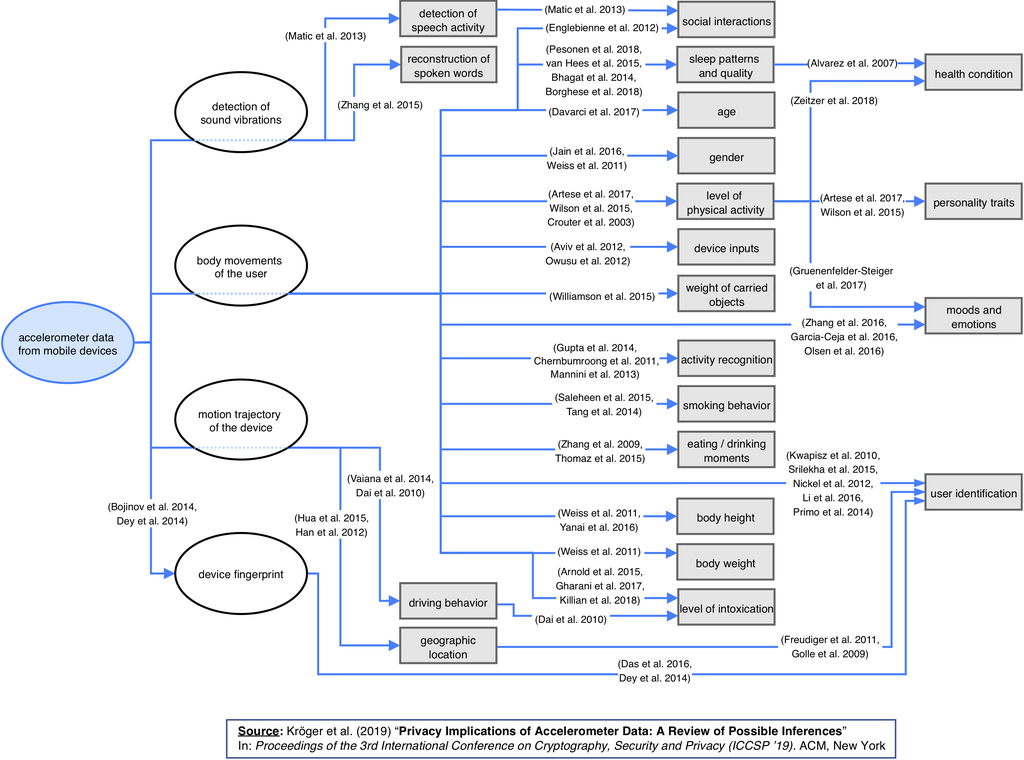TLDR:
“Accelerometers are sensors for measuring acceleration forces. (…) Today, all sorts of mobile devices, including smartphones, tablet PCs, smartwatches, digital cameras, wearable fitness trackers, game controllers, and virtual reality headsets, have built-in accelerometers. (…) Accelerometers are the most widely used sensor in wearable devices and also the sensor that is most frequently accessed by mobile apps (…) In contrast to sensors like microphones, cameras and GPS, mobile apps can access accelerometer data without requiring user permission. (…) We found that accelerometer data alone may be sufficient to obtain information about a device holder’s location, activities, health condition, body features, gender, age, personality traits, and emotional state. Acceleration signals can even be used to uniquely identify a person based on biometric movement patterns and to reconstruct sequences of text entered into a device, including passwords.”

deleted by creator
Remember that on almost every device, an app needs no permissions or user interaction to start using these sensors.
Pretty terrifying stuff. When one piece of information isn’t enough, they just combine a few to create a fingerprint. I’d never thought they could do that with just an accelerometer.
Yeah, the amount of stuff you can infer from a single sensor nowadays is pretty insane. I think this really highlights the importance of open source solutions. We need devices that we own and we can trust.
Regulators are sleeping
How can it reveal location?
Han et al. were able to geographically track a person who is driving a car based solely on accelerometer readings from the subject’s smartphone. In their approach, they first calculate the vehicle’s approximate motion trajectory using three-axis acceleration measurements from an iPhone located inside the vehicle, and then map the derived trajectory to the shape of existing routes on a map.
So, the accelerometer is precise enough to basically measure relative position changes. And then from those relative position changes, they could work out where on the map those must’ve taken place, because you’re likely going to drive along a known road which goes through the same relative position changes.
So if you walked to a location not on a known road it wouldn’t know?
deleted by creator
Jeez, that’s insane




